Whether you’re fascinated by airplanes, a military history enthusiast, a space nut, or just someone who can marvel at humankind’s ingenuity and daring, visiting the National Museum of the United States Air Force is an excellent way to spend a day in Dayton, Ohio,
When I was invited to my cousin’s wedding outside Dayton, Ohio, I got excited about the opportunity to spend a day lounging kid-free in a hotel room. I figured I would make the nine-hour drive the day before, stay overnight, and not change out of my pajamas until it was time to make myself presentable for the wedding the next evening.
But, for good or for ill, I’m not very good at lying around when there is fun stuff to explore in a new place. (Plus, my aunt and uncle scheduled a breakfast for our family, and the venue probably would have frowned upon my choice of pajamas.) So after filling up on eggs and bacon and quality time with family I don’t see nearly often enough, we headed out to the National Museum of the United States Air Force.
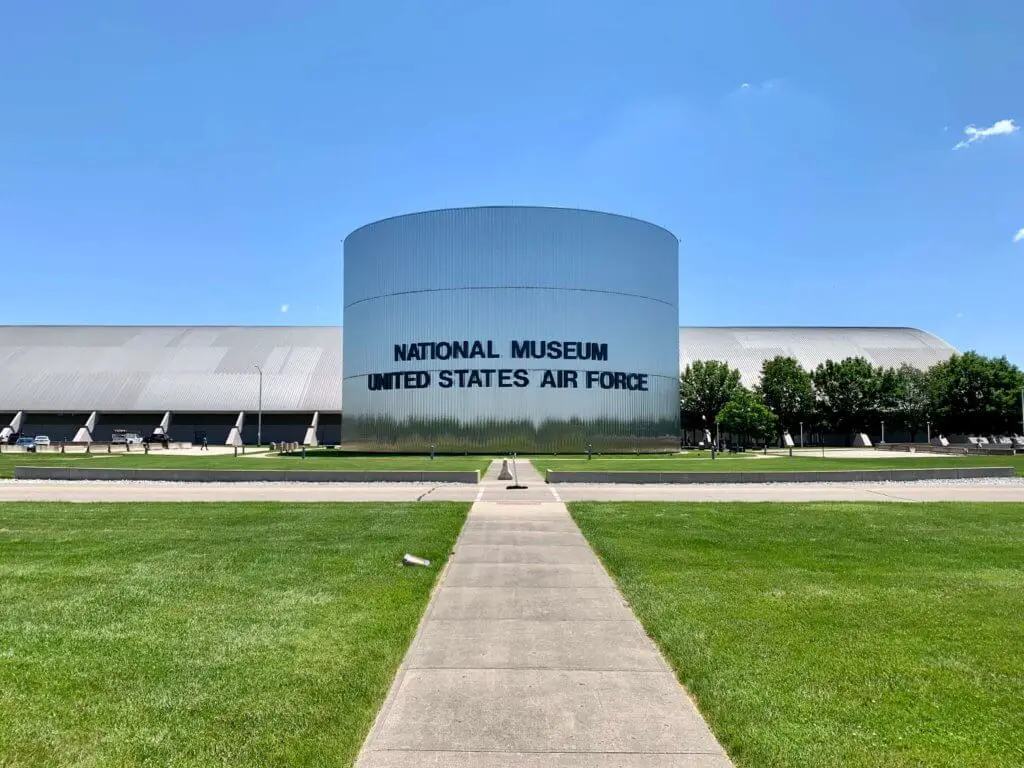
Located about six miles northeast of Dayton, Ohio, the National Museum of the United States Air Force is the largest military aviation museum in the world. We had seen the museum at the top of multiple lists of things to do in the Dayton area, but it was grandfather’s seal of approval that pushed us over the top. As a retired Navy pilot and current docent at the spectacular Steven F. Udvar-Hazy Center of the National Air and Space Museum, the fact that he had high praise for the museum meant a lot.
Once we arrived, it was easy to see why he had been impressed. There are almost a dozen galleries at the museum, with exhibits ranging from the beginnings of flight to the space era. Everywhere you look are planes, gliders, artifacts, and other aviation memorabilia, from flight suits and documents to maps and mementos. And the museum is completely free to enter!
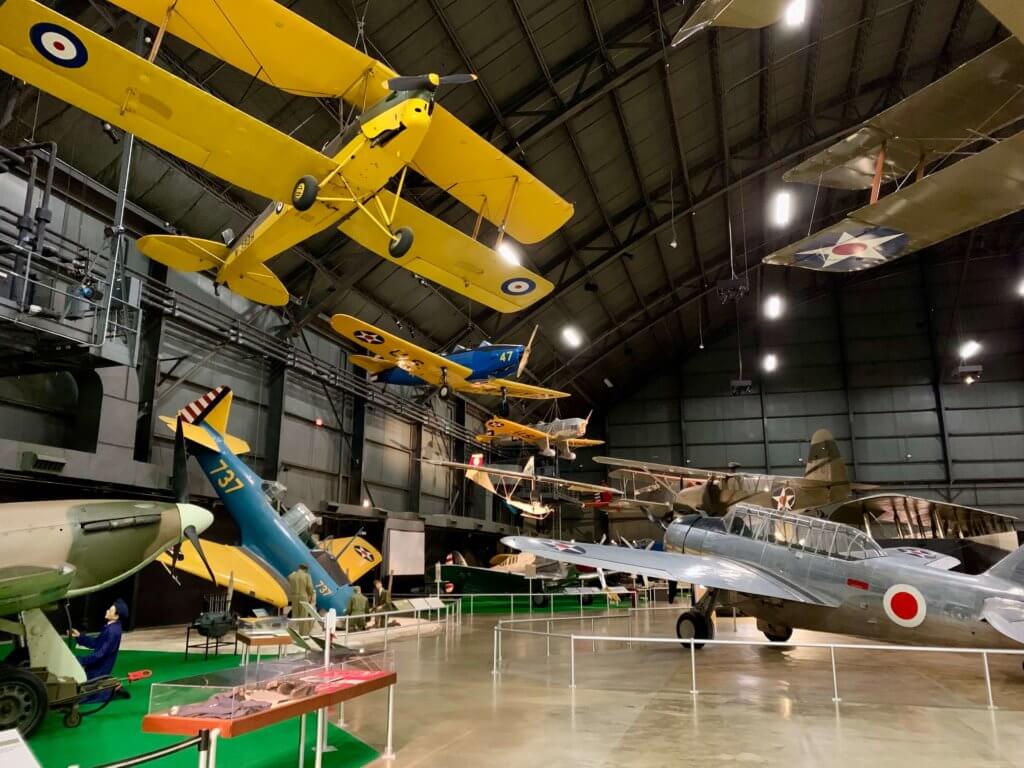
We were most interested in the presidential and space galleries, so we immediately headed to those exhibits at the far end of the museum. With only a couple of hours to spare before the wedding, we wanted to take full advantage of these unique attractions. It was tough walking by all the other incredible displays on the way, though, even though we hoped we would have time to wander those galleries as well.
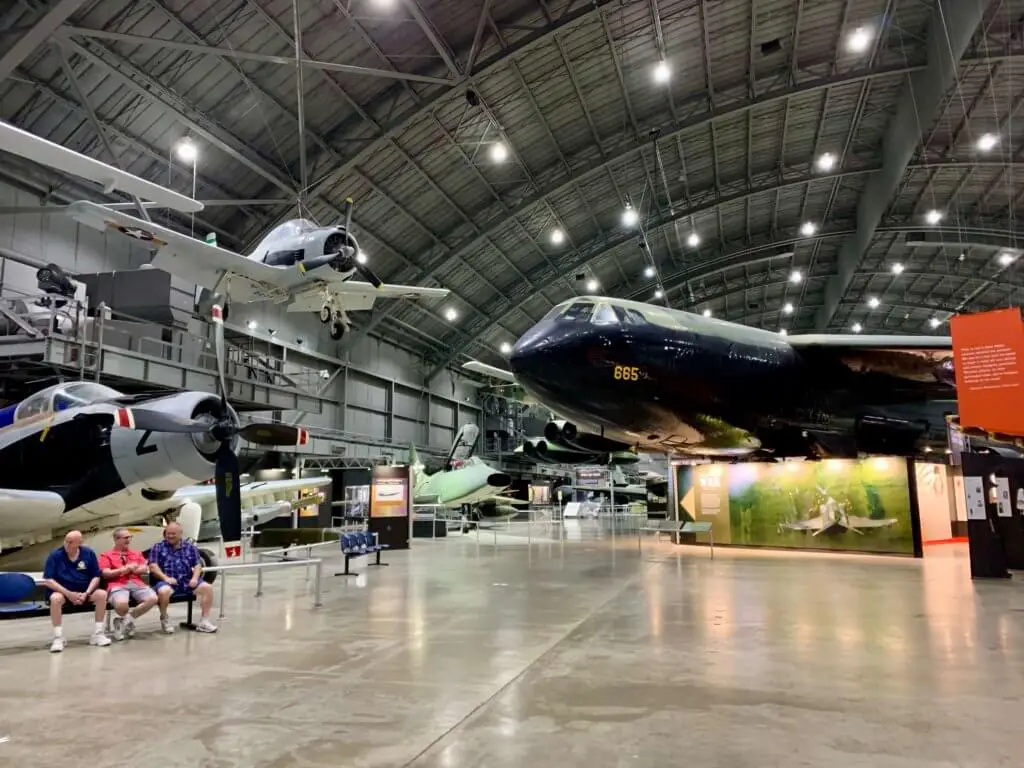
In the back corner of the Air Force museum sits the Presidential Gallery, which is home to the museum’s collection of presidential aircraft and artifacts. Here, we found planes used to transport US heads of state as early as the 1940’s, as well as Air Force One uniforms, china, and other effects from decades of presidential aviation.
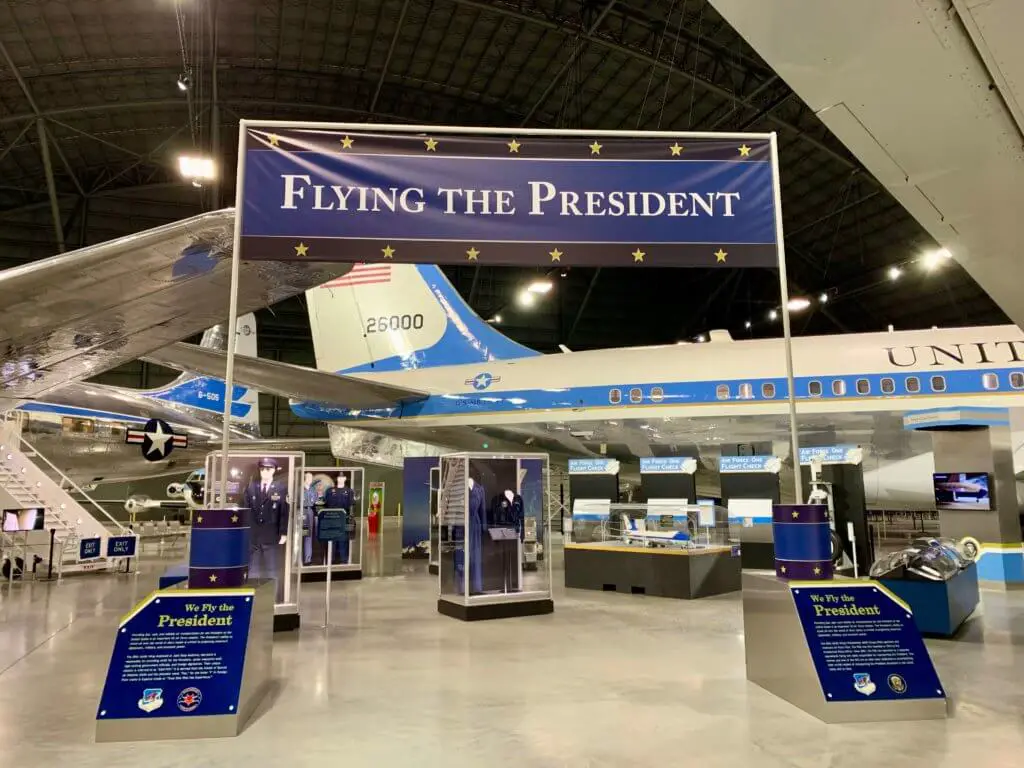
Four of the planes are open to walk through, which was a tight but fascinating squeeze. Starting with the aircraft that transported President Roosevelt, it was really impressive to see how plane technology and available in-flight luxuries changed through the years.
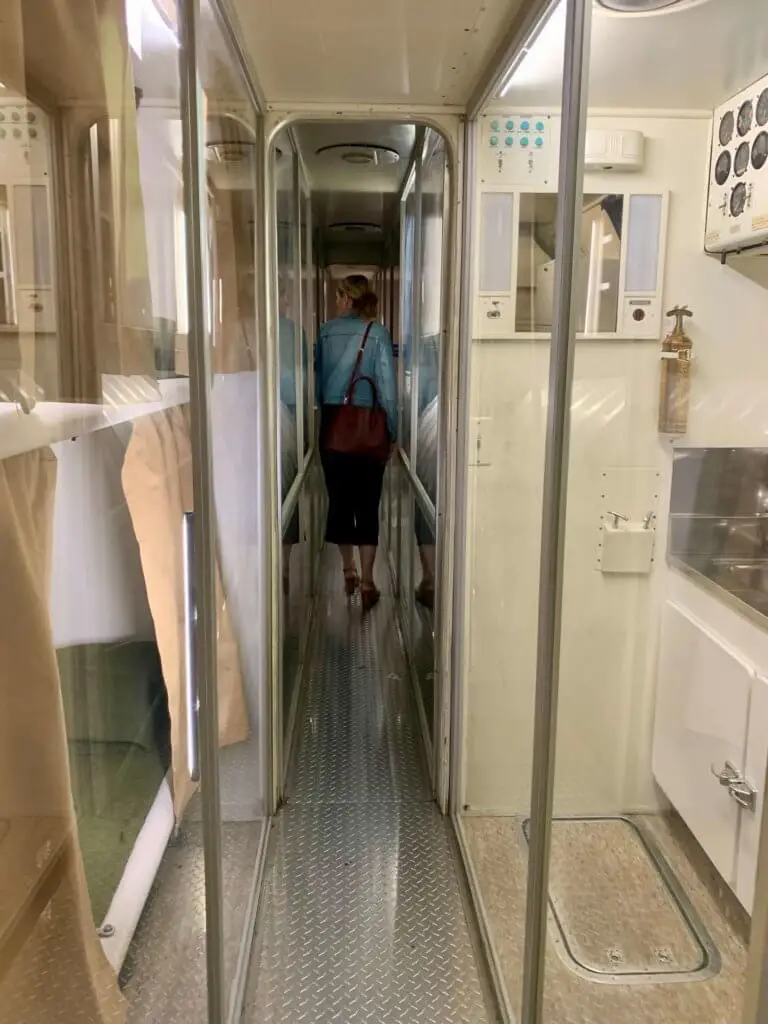
I especially loved peering into the presidential offices and seeing how homey they were able to make these tight and tiny spaces.
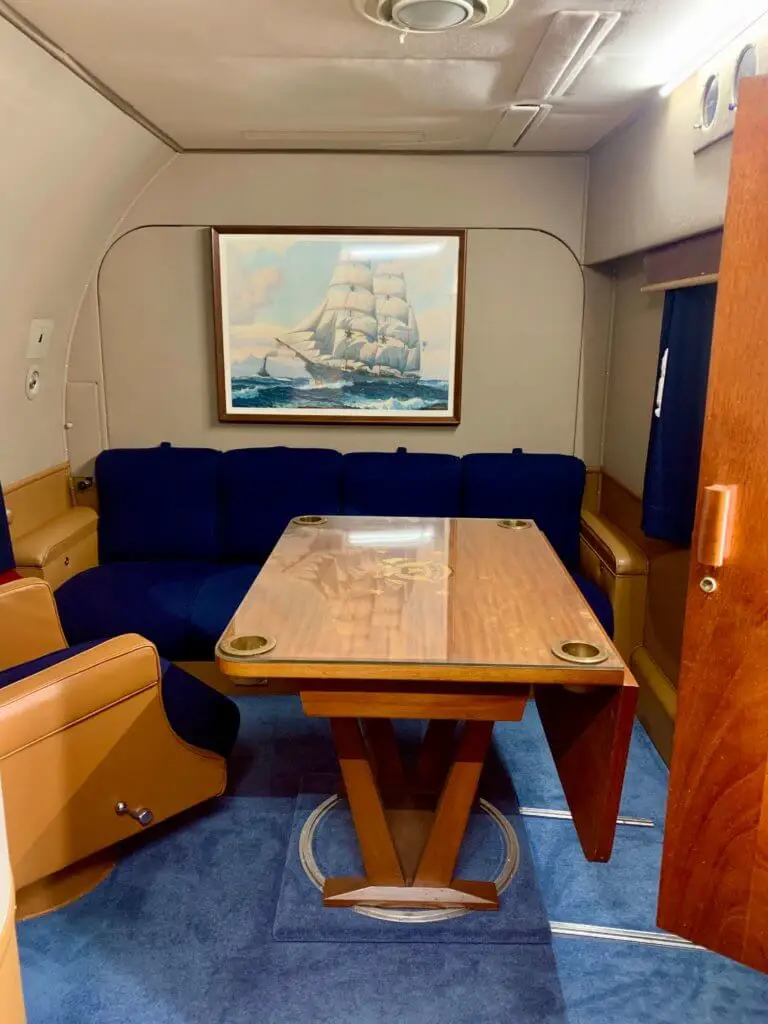
While I really enjoyed the older presidential planes, the newer Air Force One was somewhat underwhelming. It’s without a doubt a historic plane; it carried eight presidents, and Lyndon Johnson was sworn in onboard after the assassination of John F. Kennedy. However, after leaving the presidential fleet, it was converted to transport government officials. Thus, it doesn’t bear the same resemblance to what you would expect from a presidential plane today. Happily, the museum is expecting a newly decommissioned, presidentially-outfitted Air Force One in 2024.
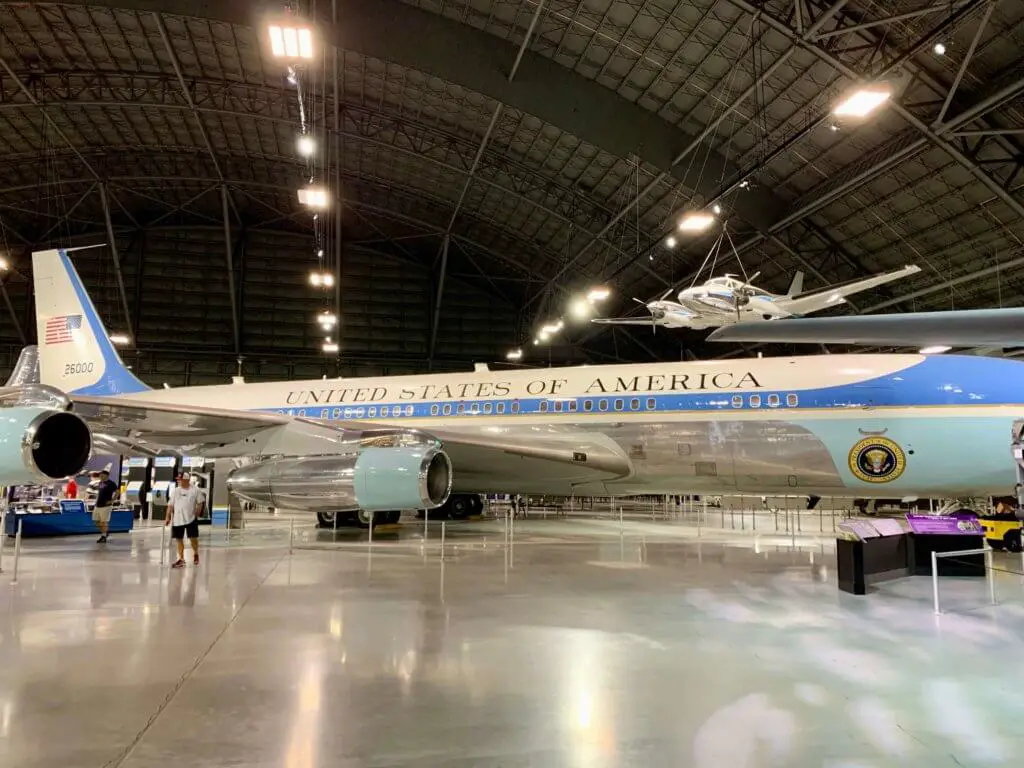
In addition to Air Force One and the presidential planes, there were numerous other famous and recognizable aircraft to see. Nearby, and also available to walk through, sits the “Hanoi Taxi,” which became famous for being the first plane to return American prisoners of war following the Vietnam War. Walking along the rows of seats, it was hard to even fathom how the POW’s it once carried might have felt in climbing onboard.
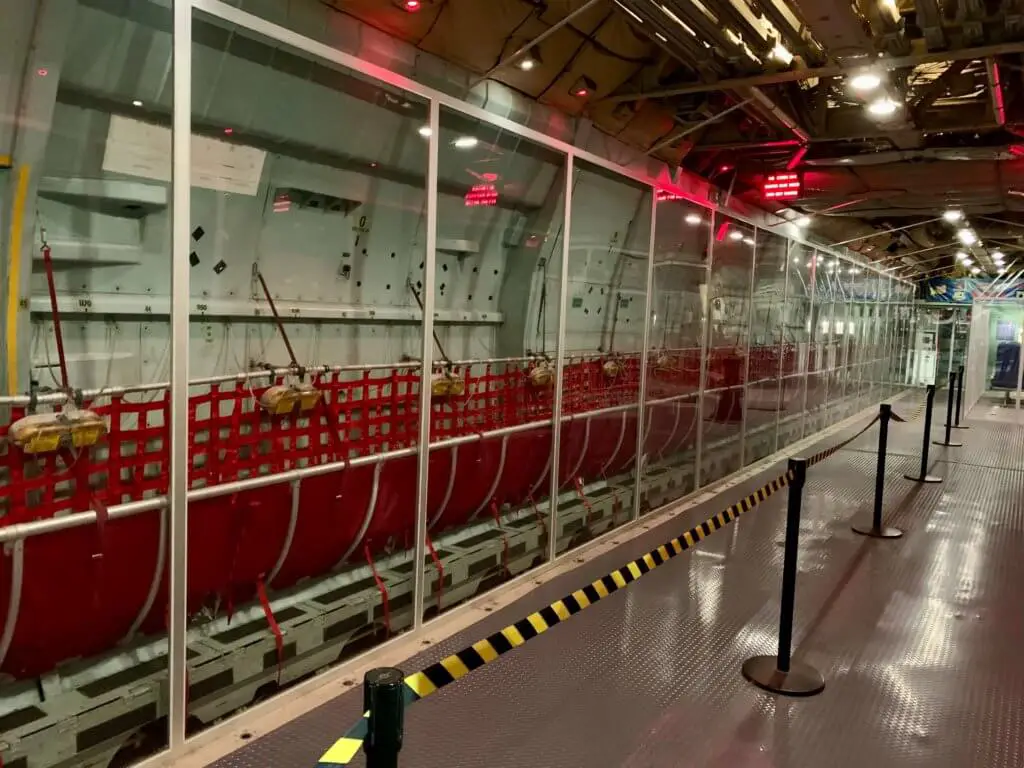
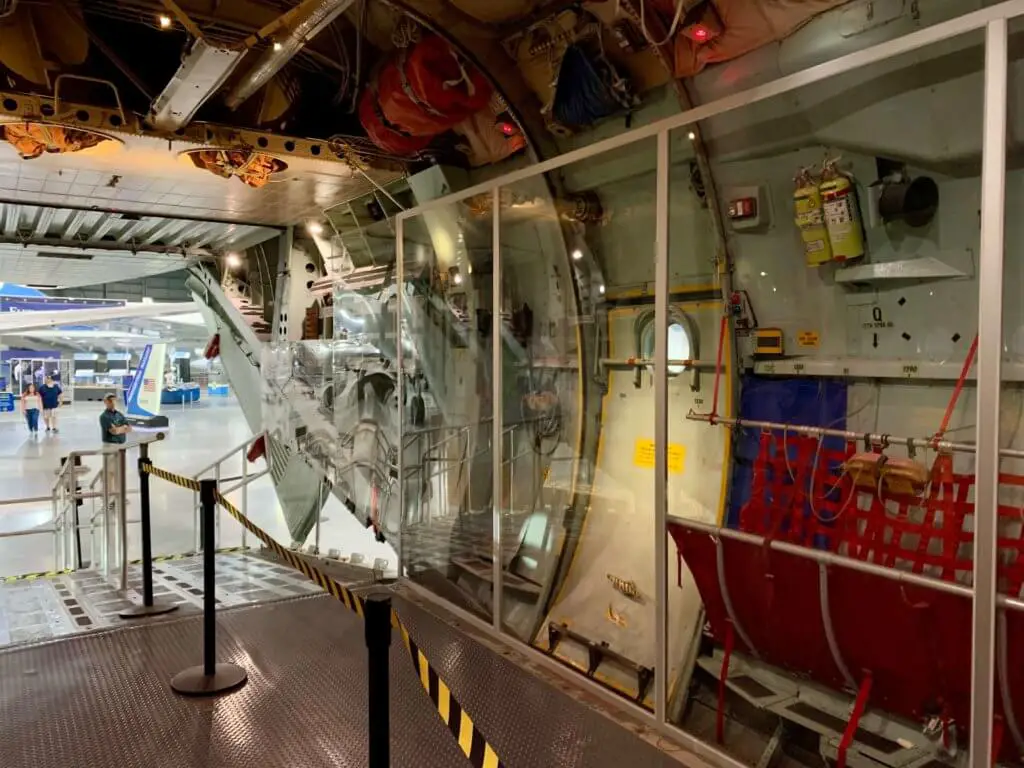
Overall, the Air Force Museum does a great job in letting visitors get up close and personal with some of its aircraft. I really appreciated the opportunity to walk into or through multiple planes, and there was even a spot where a nimble person could hop into a fighter jet cockpit (which, of course, M did).
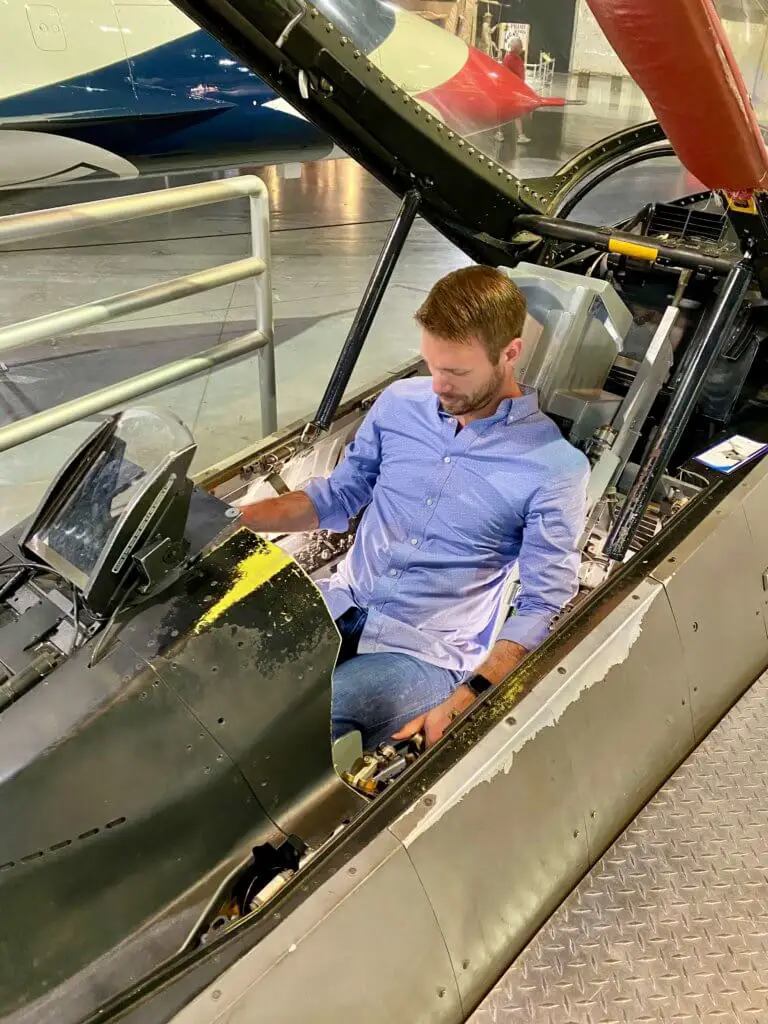
We moved through the many galleries, trying to take in as much as possible in the limited time we had. There was so much to see that it felt like we were barely scratching the surface. Everywhere you turned was some new plane, new bit of information, or new perspective on the history of the Air Force, aviation, or the conflicts represented. I also noticed that the museum did a nice job of celebrating the contributions of women, people of color, and other underrepresented groups along the way.
The center two hangars held the Cold War, Southeast Asia War, and Korean War galleries, most of which unfortunately had to be left for another time.
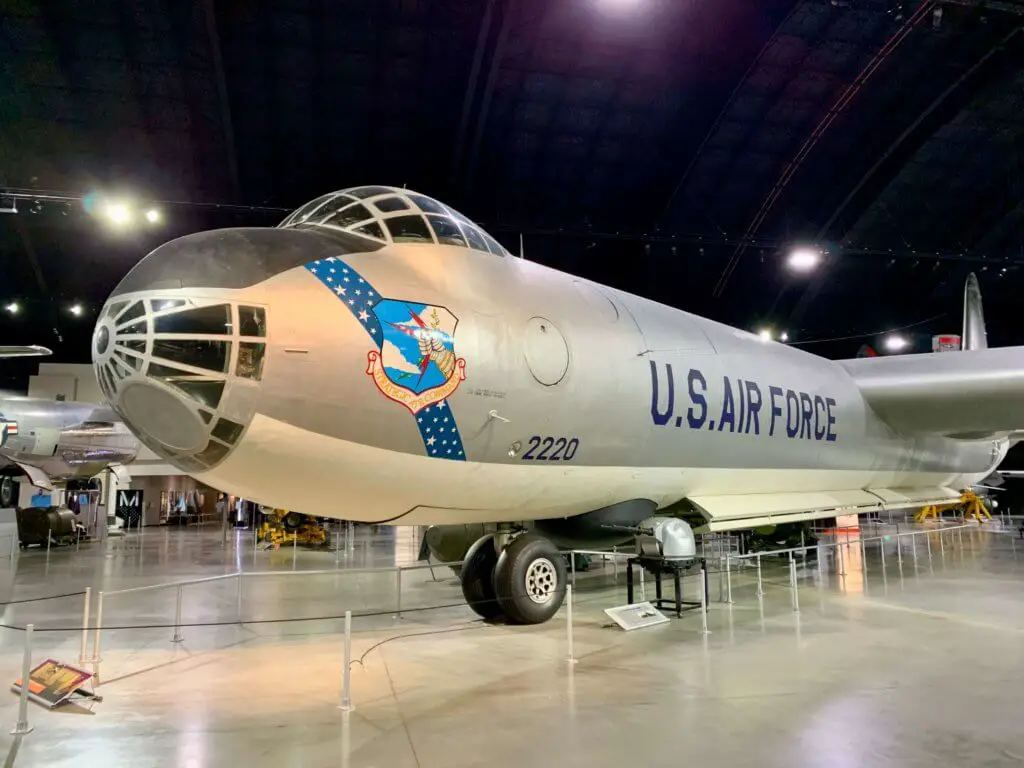
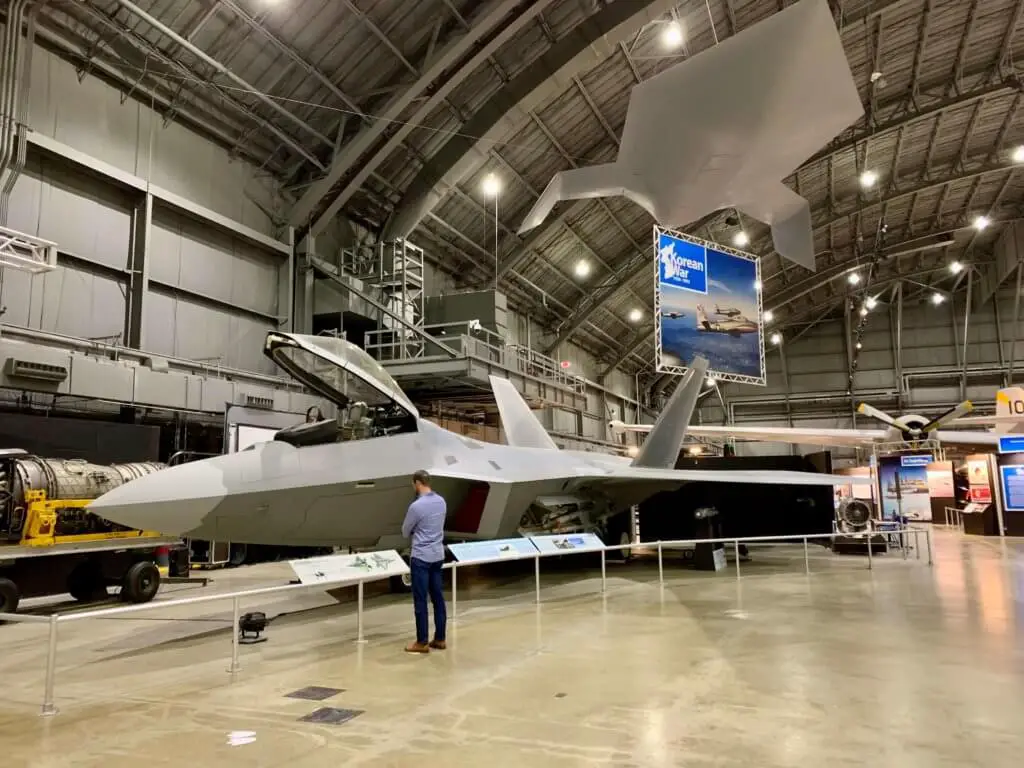
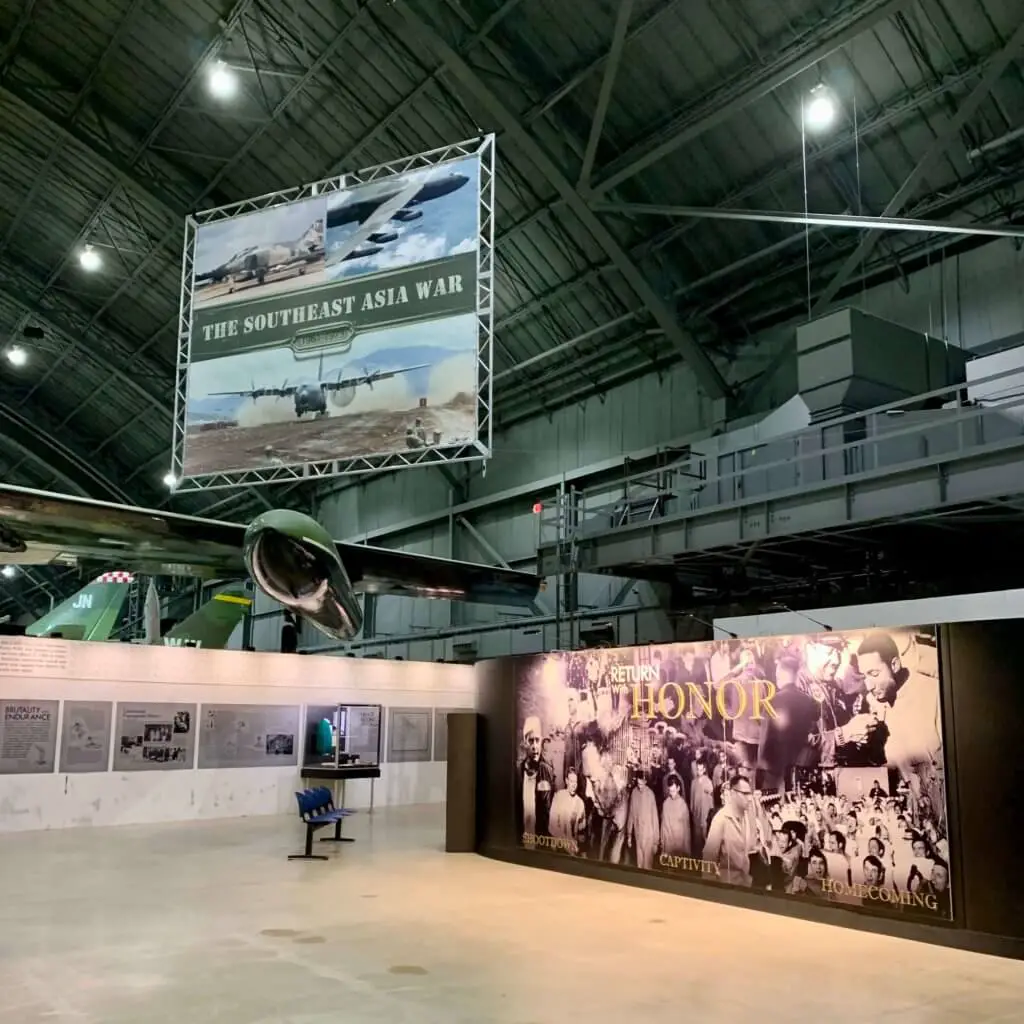
We largely breezed through these middle galleries to be able to devote more time to the earlier exhibits found near the museum entrance. Here were aircraft from World War II, including the famous Memphis Belle.
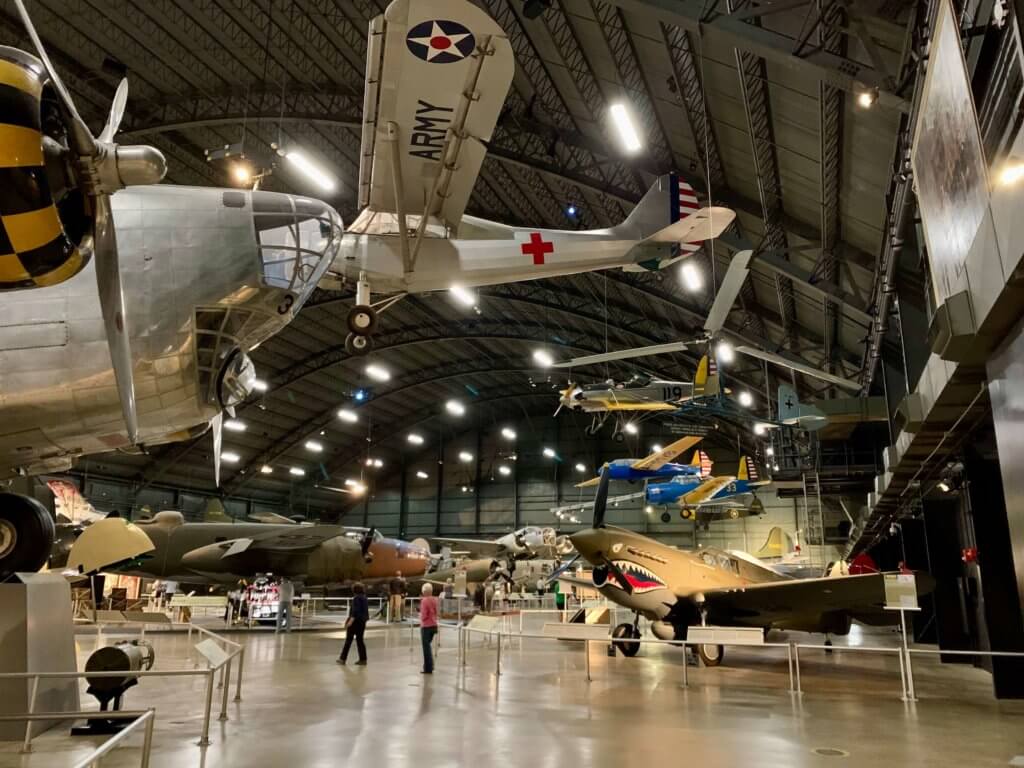
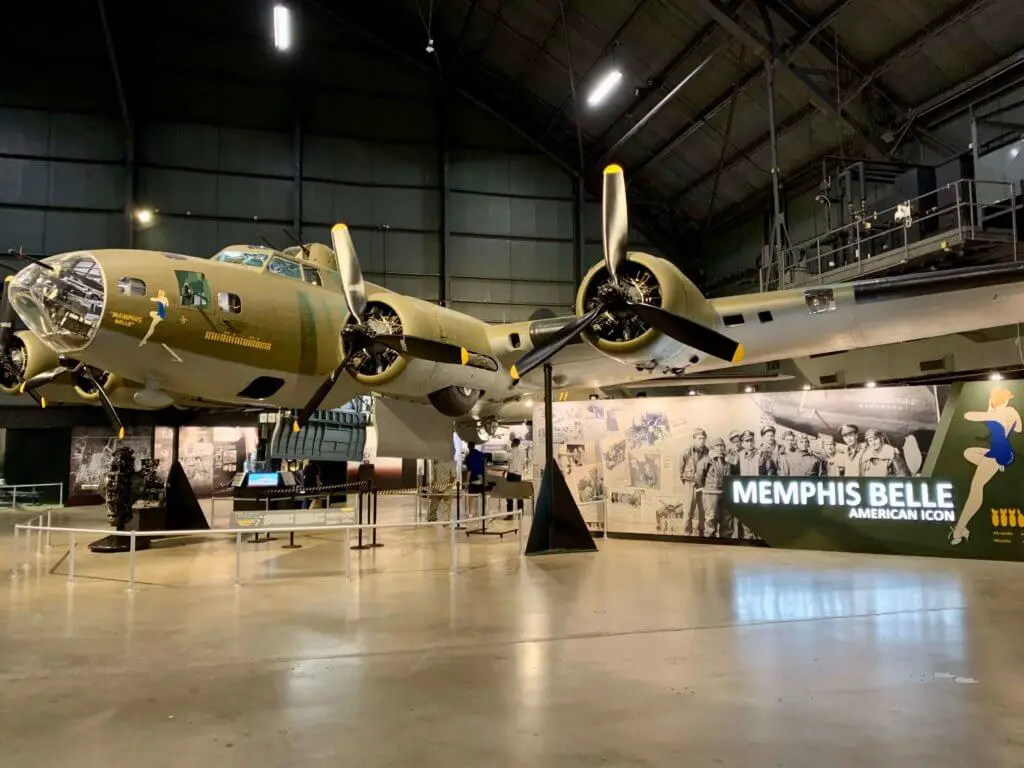
I especially lamented the lack of time to truly appreciate the World War II gallery, as there was so much to learn and see about this war where aviation first played such a massive and critical role.
We also had to be disappointingly brief with the Early Years Gallery, which included the origins of flight and World War I. We kept stepping farther and farther back into history until we eventually arrived at the earliest planes. Looking up at these rickety structures crafted out of wood and cloth, it was hard to imagine how something like that could become (or stay) airborne… or how anyone had found the courage to make the attempt. I find it absolutely mind-boggling how humanity was able to go from the Wright Brothers just getting off the ground in 1903 to widespread use of planes in warfare by World War I. The creativity, daring, and ingenuity of humankind is truly remarkable.
By the time we reached the end of the Early Years Gallery, it was time to head back to the hotel to get ready for the wedding. Even though we only had a few hours to spend there, I’m so glad that we took the time to visit the National Museum of the United States Air Force. While we certainly didn’t give the place its full due, it was absolutely fascinating and I would highly recommend it for anyone looking for things to do in Dayton, Ohio. Even if you’re not a history buff or an aviation enthusiast, there seems to be something for everyone.
Below are some tips and information to help you plan your own visit!
Tips for Visiting the National Museum of the United States Air Force
- The museum is open from 9:00 AM to 5:00 PM seven days a week, excluding major holidays.
- Make sure to allow plenty of time, as there are four hangars, almost a dozen galleries, and over three hundred and fifty aircraft. We were only able to allot a couple of hours to the museum and although we made it to each gallery, we certainly didn’t give the museum its full due.
- Wear comfortable shoes, though there are many benches and seats to rest if needed.
- Guided tours are offered six times per day and last about an hour and fifteen minutes each.
- The museum is free to visit, but a donation to help fund the museum’s programs is much appreciated.
- Kids are welcome at the museum, and there are a limited number of strollers available free of charge. There are activities for kids, but most are best suited for elementary age and up.
- The museum is largely handicap accessible, including a limited number of wheelchairs and scooters available for use. Guided tours for the hearing impaired are available with advance notice.
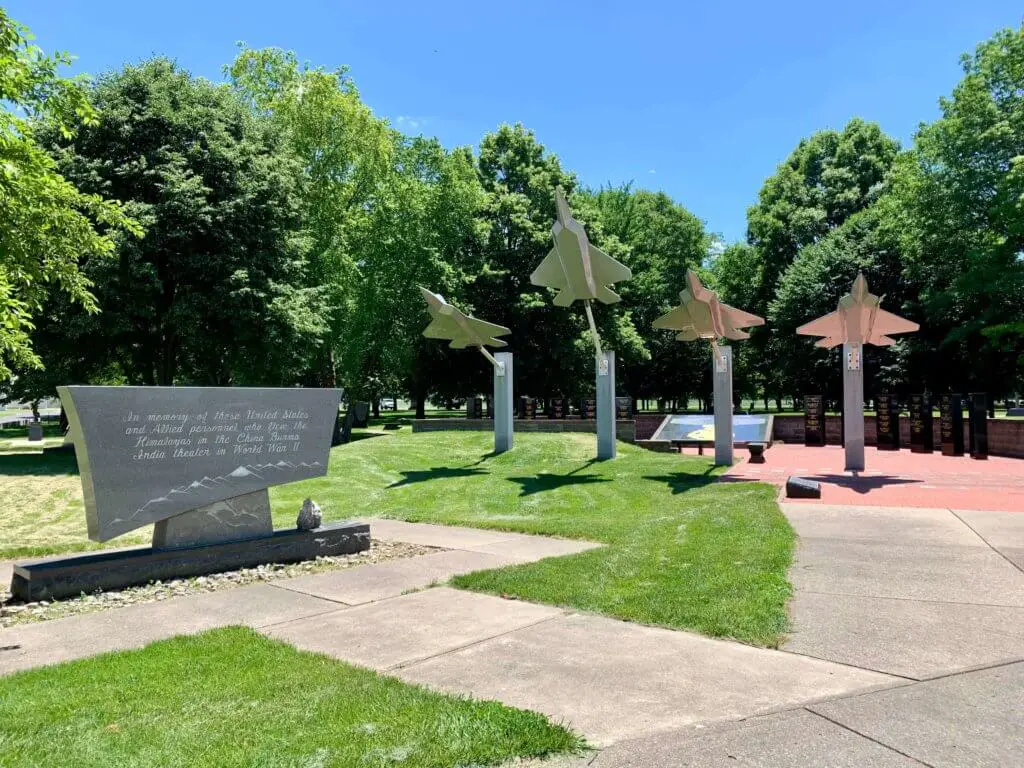
How to Get to the Air Force Museum
The National Museum of the United States Air Force is about six miles northeast of Dayton, Ohio at the Wright-Patterson Air Force Base. The address is 1100 Spaatz St, Dayton, OH 45433. You’ll need a car to get there, as it is not convenient to access by public transportation. It’s an easy drive, however, because the museum is located just ten minutes off Interstate 70, a major east-west highway.
The closest airport is Dayton International (DAY), but the larger Cincinnati/Northern Kentucky (CVG) and John Glen Columbus (CMH) international airports are each a little more than an hour away.
Where to Stay to Visit the Air Force Museum
There are lots of nearby accommodation options in Dayton, Ohio. My cousin’s wedding was in the suburb of Centerville, so we stayed a little further south at the Hampton Inn and Suites in Springboro. We had a great experience there – the staff were so friendly! – and it was only about twenty minutes from the museum.
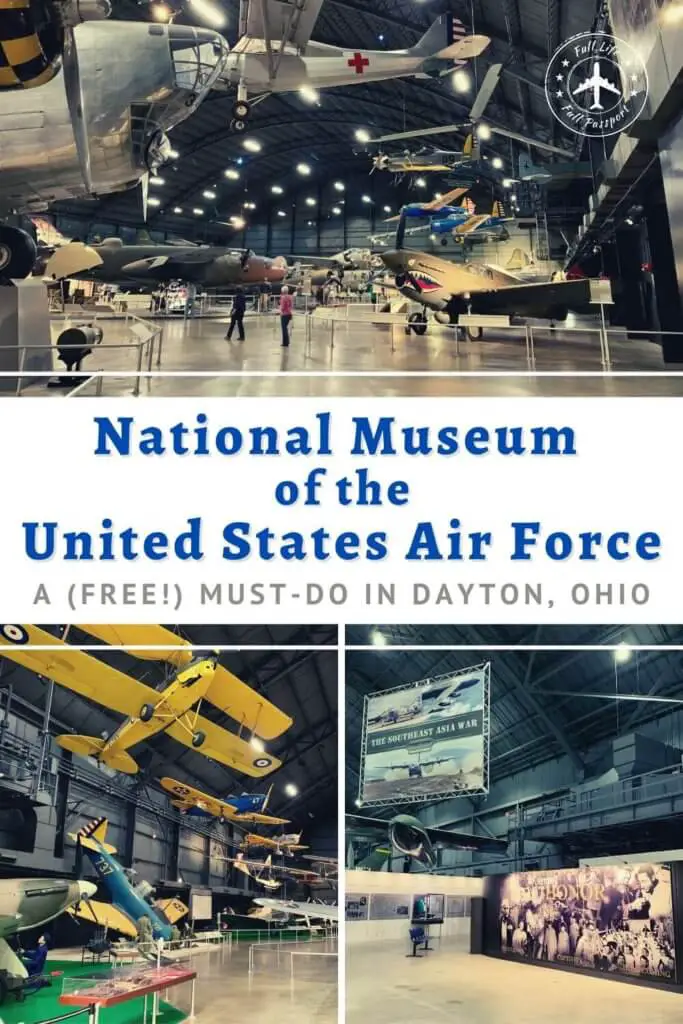
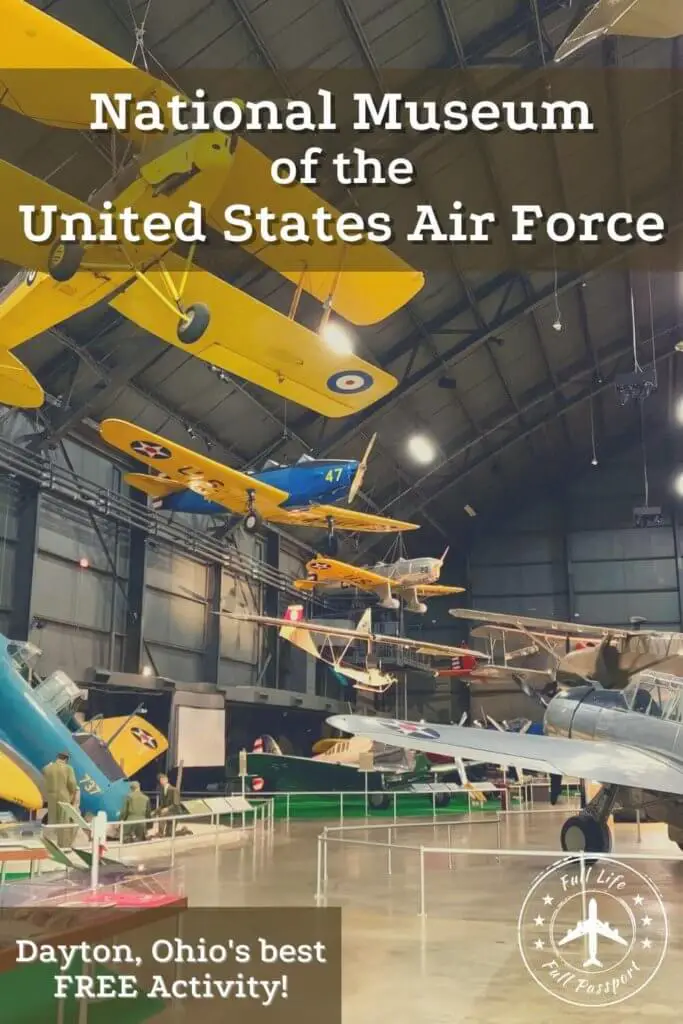
Like the post? Pin to save or share!
Read More:
Need some help planning your trip to Ohio? Full Life, Full Passport offers customized planning services for all kinds of vacations and budgets!
Want to be the first to know when a new post is published, or to receive exclusive content directly to your inbox? Join our email list!
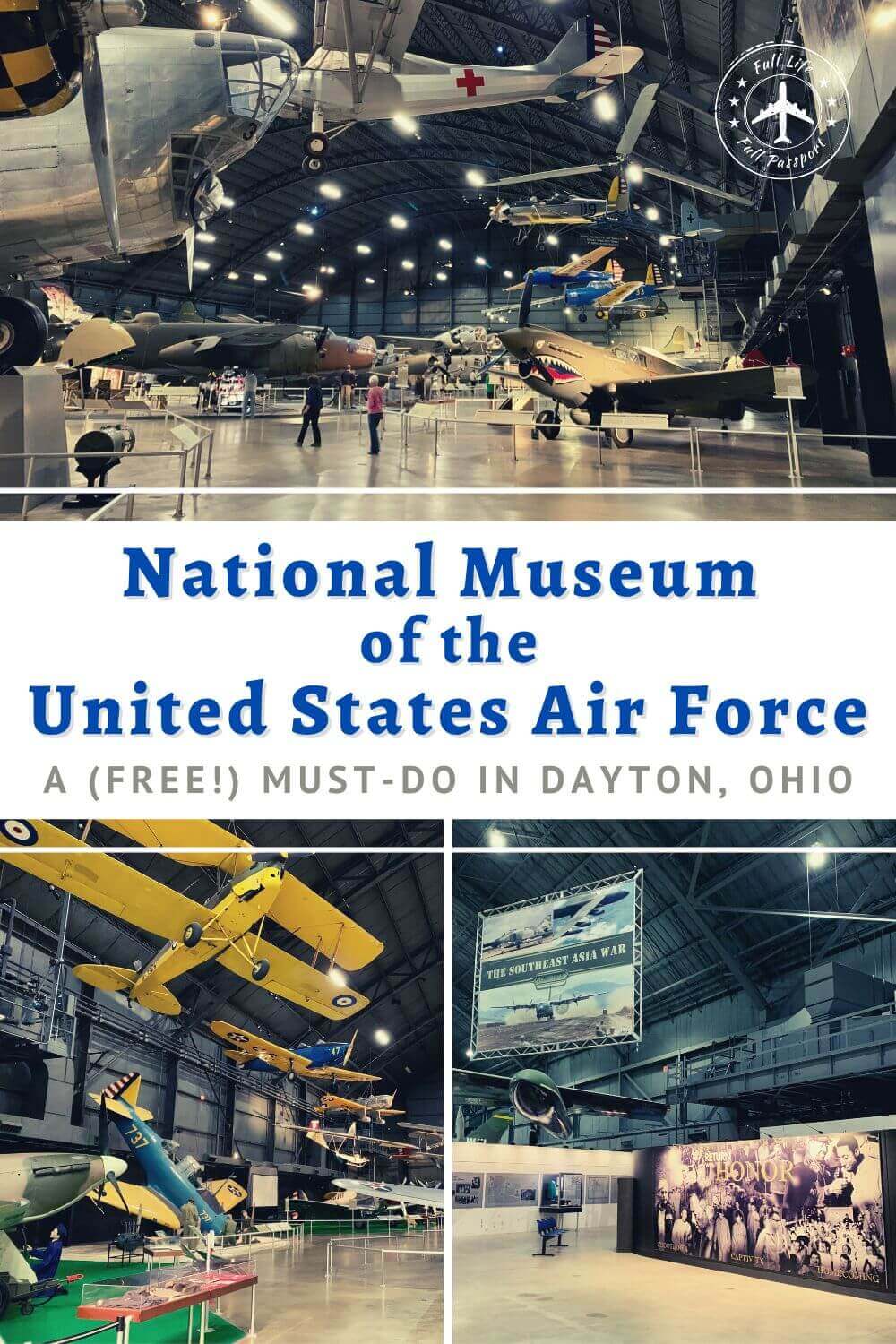
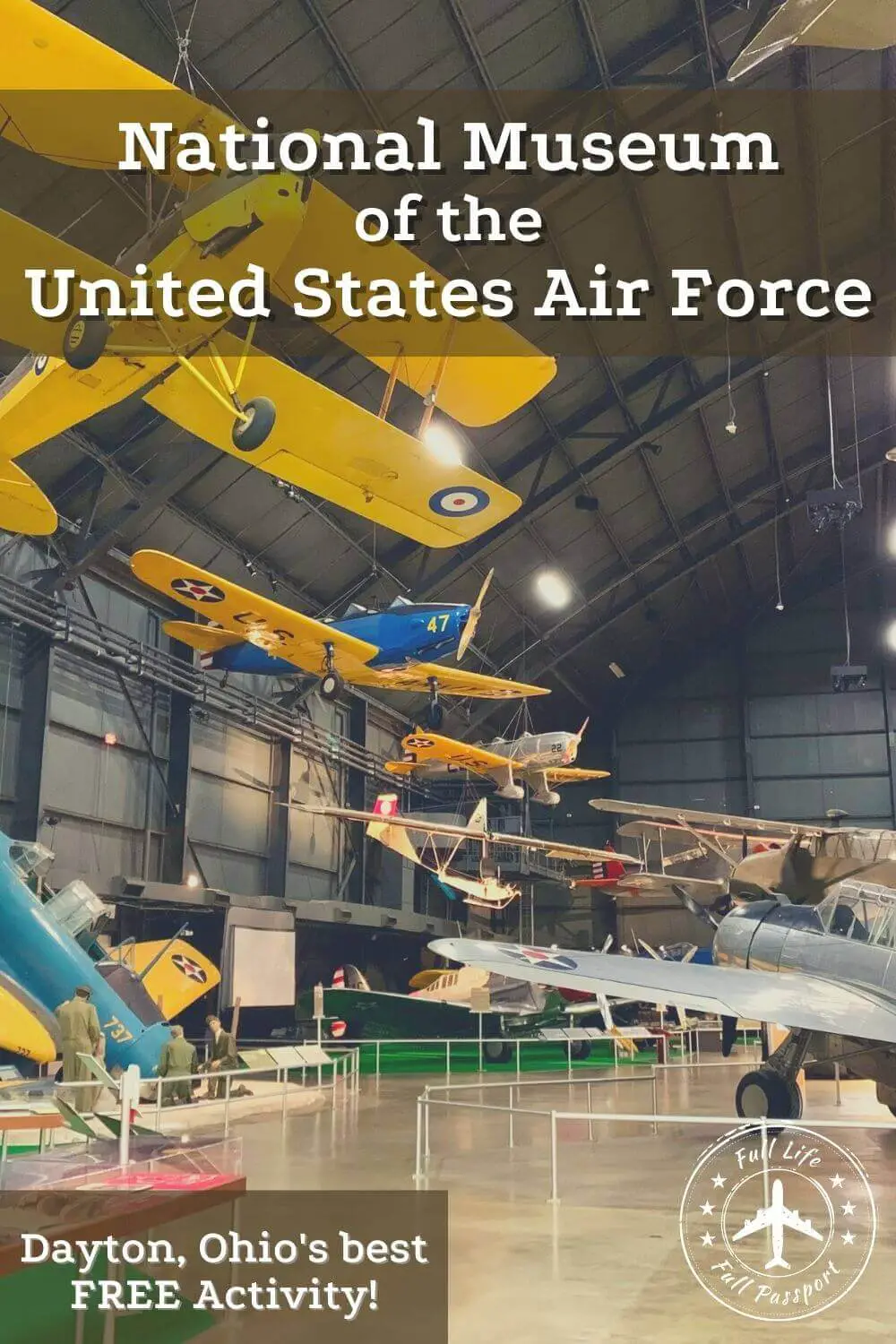

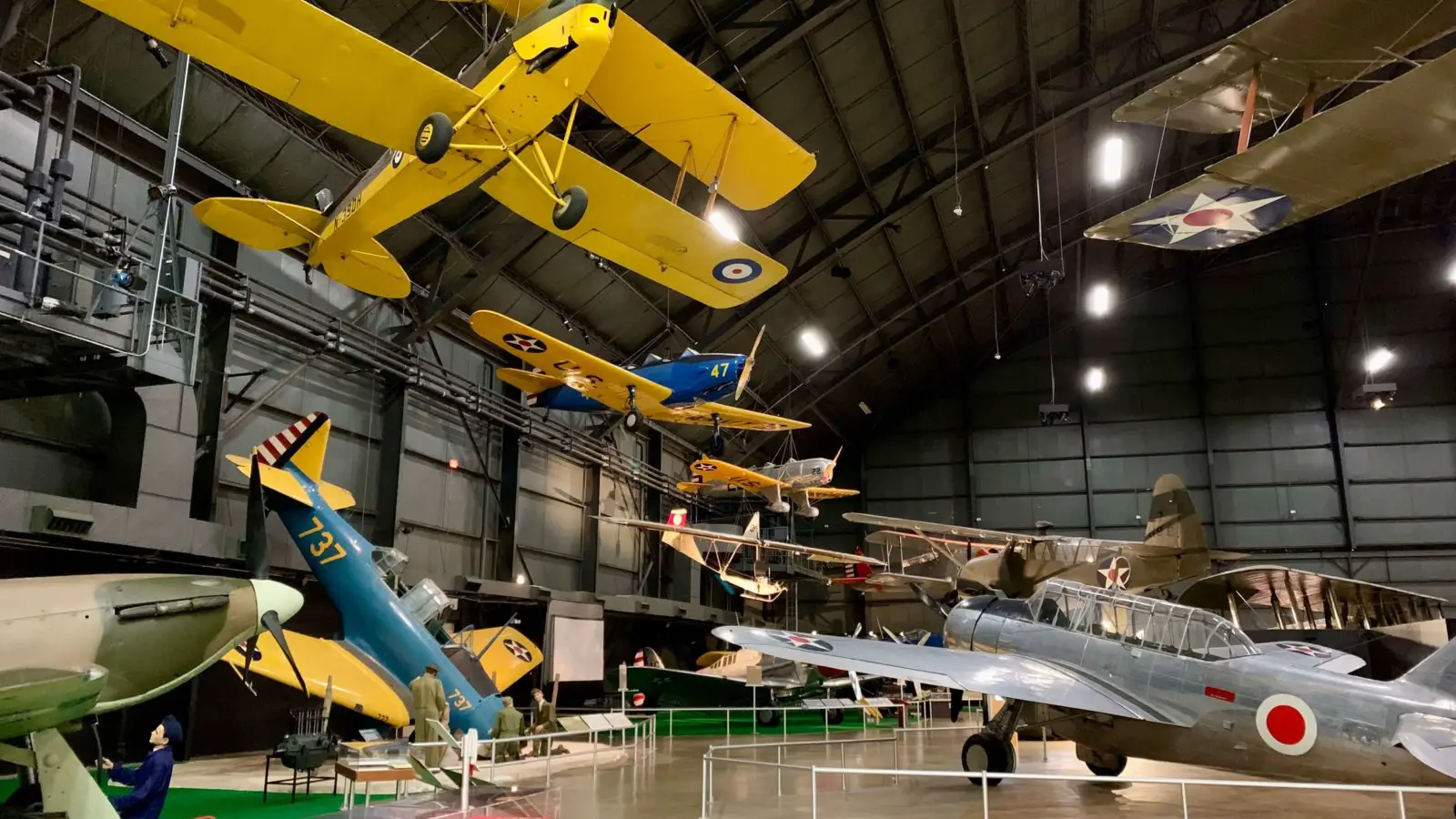
 Three Days in the White Mountains with Kids
Three Days in the White Mountains with Kids